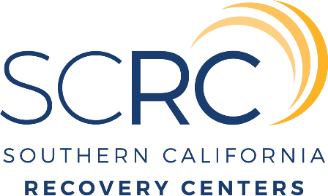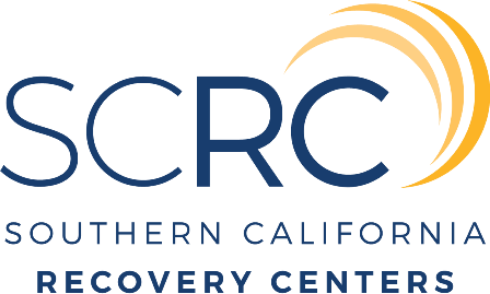Understanding Fentanyl Addiction
What is Fentanyl and Why is it Dangerous
Fentanyl, a synthetic opioid initially developed for pain management in cancer patients, is significantly more potent than heroin and morphine. This power is both a boon and a bane, as it provides relief from severe pain but also carries a high risk of overdose and addiction. Fentanyl works by binding to the body’s opioid receptors, which control pain and emotions. When consumed, it can induce euphoria but also suppress breathing, which in overdose situations can be fatal. The rise of fentanyl-related overdoses is alarming, prompting the need for informed discussions on its use, effects, and the necessary treatments available.
The Rise of Fentanyl Use in the US
The proliferation of fentanyl in the United States marks a significant shift in the landscape of opioid addiction. Its potency and relatively low cost have made it popular among drug traffickers and users, leading to a sharp increase in its illicit use. This surge is mirrored in the escalating numbers of overdose deaths and is a contributing factor to the opioid crisis currently plaguing the nation. Understanding the epidemiology of fentanyl use is critical for devising effective public health responses and treatment options. Learn more about the rise of fentanyl use here.
Recognizing Fentanyl Addiction Symptoms
Fentanyl addiction can manifest through various physical and psychological symptoms. Physically, individuals might exhibit signs such as drowsiness, nausea, confusion, constipation, sedation, and problems breathing. Psychologically, symptoms include intense cravings for the drug, inability to control its use despite knowing its harm, and persistent usage even when it leads to personal and professional issues. Recognizing these signs early is essential for timely intervention, which significantly improves the prognosis for recovery in individuals struggling with this powerful addiction. For those observing these symptoms in themselves or a loved one, Southern California Recovery Centers provide effective fentanyl therapy and ongoing support tailored to individual needs.
Fentanyl Treatment Options at SCRC
Detoxification and Managing Withdrawal
Detoxification is the initial step in overcoming fentanyl addiction, and at Southern California Recovery Centers (SCRC), the process is comprehensively managed to ensure safety and effectiveness. The potency of fentanyl requires a carefully monitored detox phase, where medical professionals help alleviate the intense discomfort of withdrawal symptoms. This phase can include the administration of medications to manage symptoms like severe cravings, agitation, and physical pain. SCRC utilizes cutting-edge pharmacotherapy for opioid addiction, such as buprenorphine or methadone, under strict medical supervision. This gradual step-down process is crucial for transitioning individuals to a stable physical and emotional state, setting a solid foundation for ongoing therapy.
Long-Term Addiction Care Programs
Following detoxification, SCRC offers long-term addiction care programs that are essential for sustainable recovery. These programs extend beyond the physical aspects of addiction and delve into the psychological impacts of fentanyl dependency. Structured as residential or outpatient services, these long-term care options include daily therapy sessions, peer support groups, and continuous medical assessments. Key to this process is the incorporation of holistic therapies that address body, mind, and spirit, which are vital for overall wellness and long-term sobriety. At SCRC, the structured residential programs for drug rehabilitation provide an environment that supports healing and growth with personalized care tailored to the needs of each individual.
Personalized Addiction Treatment Strategies
At SCRC, we believe that each journey to recovery is unique and personalized addiction treatment strategies are fundamental to success. Our team of highly skilled therapists and addiction specialists work closely with each client to develop a tailored treatment plan. This personalized approach includes various therapeutic modalities such as cognitive-behavioral therapy (CBT), dialectical behavior therapy (DBT), and motivational interviewing. Each treatment strategy is designed to help clients uncover the root causes of their addiction, develop new coping mechanisms, and rebuild their lives. SCRC also puts a significant emphasis on family involvement in the recovery process, providing family therapy sessions that help mend relationships and build a supportive network essential for recovery.
Specific Therapies Used in Fentanyl Addiction Recovery
EMDR Therapy for Trauma and Addiction Recovery
Eye Movement Desensitization and Reprocessing (EMDR) is a powerful therapeutic tool especially effective for those dealing with trauma alongside addiction. At Southern California Recovery Centers, the application of EMDR in addiction therapy explicitly targets the unresolved trauma that often underpins addictive behaviors. By allowing the brain to reprocess traumatic memories, EMDR reduces the emotional response to those memories, thereby lessening the compulsion to use substances like fentanyl for emotional relief. This therapy involves an eight-phase treatment approach that includes client history, preparation, assessment, desensitization, installation, body scan, closure, and reevaluation, ensuring a comprehensive healing process. This modality is incredibly beneficial, not just for individuals. Still, it is a cornerstone in our specialized recovery approaches for CEOs and high-level professionals, helping them manage both professional pressures and personal struggles effectively.
Somatic Experiencing and Its Benefits
Somatic Experiencing (SE) is another therapeutic strategy utilized in the treatment of fentanyl addiction at SCRC, particularly useful for its focus on bodily sensations and somatic experiences. SE helps individuals recognize and resolve physiological states tied to drug cravings and traumatic memories, making it an exceptional complement to traditional psychotherapies. The concept revolves around the notion of pendulation – the movement between regulation and dysregulation in the nervous system. By fostering greater bodily awareness and recalibrating the nervous system’s response to stress, SE aids clients in breaking free from the cyclical patterns of addiction. The benefits of incorporating SE into fentanyl addiction treatment are profound, as they extend beyond immediate recovery to long-term management of stress and triggers. Furthermore, our facilities in Dana Point are renowned for providing somatic benefits in addiction relief, enabling clients to explore and heal in an environment that complements their recovery journey.
The Role of Structured Recovery Programs
Structured recovery programs in SCRC provide the framework within which therapies like EMDR and SE operate. The structured environment offers a stable routine, regular therapy sessions, and community support, critical components for sustaining recovery from fentanyl addiction. These programs are tailored to meet individual needs, ensuring each client receives the most effective treatment modality suited to their specific situation. Key to these programs is their adaptability, allowing the incorporation of advancements in addiction treatment practices and new therapeutic approaches as needed. Furthermore, structured recovery programs provide a continuity of care that is essential for long-term success. Participants are encouraged to engage with various aspects of their treatment, from group therapy to individual counseling and holistic approaches, establishing a solid foundation upon which they can build a sober, fulfilling life. Whether you are stepping down from intensive care or transitioning into ongoing outpatient support, transitional resources after drug detox in Southern California are well-equipped to support each phase of the recovery process.
Support for Diverse Groups
Southern California Recovery Centers (SCRC) live up to their reputation by offering specialized fentanyl addiction therapy options tailored to address the unique challenges faced by diverse groups, including veterans, CEOs, and young adults. Each program is designed to provide the proper support and therapy necessary to achieve long-term recovery.
Veteran and Military Substance Abuse Programs
Veterans and active military personnel often face distinct challenges that can contribute to substance abuse, such as PTSD and other trauma-related issues. SCRC is committed to serving those who have served our country by providing veteran-focused substance abuse treatment in Southern California. These programs not only address fentanyl addiction but also the underlying aspects of military service that may exacerbate substance use. Personalized treatment plans include therapies such as EMDR and Somatic Experiencing, which are particularly effective in treating trauma-related symptoms alongside addiction.
CEO Addiction Recovery
In the high-stakes world of corporate leadership, the pressures can be overwhelming, leading some executives to turn to substances like fentanyl. SCRC offers bespoke recovery solutions geared towards CEOs and other high-level professionals. By focusing on privacy, discretion, and intensive personal care, the CEO addiction recovery program helps leaders tackle their unique stresses while managing their responsibilities. Therapeutic approaches are designed to enhance stress management, decision-making skills, and personal wellness, equipping CEOs with the tools they need to sustain their sobriety and continue their professional successes.
Addiction Help for Young Adults
Young adults encounter various life transitions and pressures that can lead to drug use, including prescription pills and opioids like fentanyl. SCRC’s young adult program strikes a balance between addressing these unique life-stage challenges and providing robust addiction treatment. The young adult drug rehabilitation services in Carlsbad offer a dynamic environment conducive to growth and recovery. Through a combination of peer support, family involvement, and developmental strategies, SCRC helps young adults not just to recover from addiction but also to build a roadmap for their future, focusing on education, career, and healthy social interactions.
Each of these programs underscores SCRC’s commitment to addressing the specific needs of various groups affected by fentanyl addiction, ensuring all clients have access to the highest quality care tailored to their unique circumstances.
Building a Sustainable Recovery
Importance of Continuity of Care
The journey through addiction recovery is multifaceted and extends well beyond the initial detox or therapy sessions. At Southern California Recovery Centers, we emphasize the significance of continuity of care, an essential element in the sustainability of sobriety. This approach ensures that each individual receives consistent support and expertise throughout their entire recovery process. The transition phases between different levels of care, such as moving from intensive outpatient programs to ongoing support groups, are meticulously managed to prevent any disruption in the recovery journey. By maintaining a consistent therapeutic environment and progressive treatment, we provide a seamless experience that significantly reduces the likelihood of relapse.
Life Skills and Vocational Training in Recovery
Developing life skills and vocational capabilities are crucial in reinforcing a drug-free life. At SCRC, our recovery programs are structured not only to help men overcome their addictions but also to equip them with the skills necessary for a successful, fulfilling life post-treatment. Our vocational training programs cater to various interests and industries, enabling clients to rediscover their professional goals and aspirations within a supportive environment. Skills in communication, time management, and job responsibility are intertwined with therapy sessions, ensuring that every aspect of the individual’s life is addressed. This holistic approach not only aids in recovery but also boosts confidence and independence, making it easier for individuals to re-integrate into society with a strong sense of purpose and direction.
Maintaining Sobriety Through Community and Support Systems
The role of community and support systems in maintaining sobriety cannot be overstated. At Southern California Recovery Centers, fostering a tight-knit community is a cornerstone of our treatment philosophy. Through regular group therapy sessions and peer-led support groups, individuals are provided with a platform to share their experiences and challenges, creating an empathetic space rooted in mutual respect and understanding. This collective journey fosters a deep sense of belonging and accountability, which is vital in long-term sobriety. Additionally, our alum network acts as an extended support system, offering ongoing encouragement and opportunities for mentorship. Engaging in community activities and volunteer work further reinforces the commitment to sobriety and enhances personal growth and social responsibility.
Conclusion: Pathways to a Drug-Free Future at SCRC
Summarizing Fentanyl Treatment Success
At Southern California Recovery Centers (SCRC), we measure our success by the profound life changes we witness in our clients. Our targeted approach to fentanyl addiction therapy, as part of our broader drug treatment efforts, yields significant improvements in the quality of life for those struggling with dependency on this potent opioid. By integrating medical detox with psychological therapies and personalized aftercare planning, we have seen countless individuals move from the depths of addiction to the heights of personal and professional achievement. Our evidence-based treatments, combined with our serene Southern California settings in places like Carlsbad and Dana Point, provide an ideal backdrop for recovery and growth.
How SCRC Prepares Clients for Long-Term Sobriety
Long-term sobriety is built on a foundation of comprehensive care and personal development. At SCRC, this begins with structured fentanyl addiction treatments in Southern California, which are designed to detoxify the body safely while addressing the psychological aspects of addiction. Following detox, our long-term care programs support clients through options ranging from residential treatment to outpatient services, each tailored to facilitate personal discovery and the development of coping strategies. Additionally, our commitment to incorporating vocational and life skills training helps clients build the resilience and competencies needed to navigate the challenges of sobriety in daily life.
Next Steps: Starting Your Recovery Journey
Your journey to recovery begins with a single step: reaching out for help. Whether you’re grappling with fentanyl addiction or another substance use disorder, SCRC is equipped to guide you toward a healthier, drug-free future. By choosing SCRC, you’re not just getting treatment; you’re gaining a partner in your recovery process. Contact us today to learn more about our programs and how we tailor our interventions to support each individual’s path to recovery. Together, we can achieve the sobriety you deserve and set the foundation for a thriving, fulfilling life beyond addiction.
Frequently Asked Questions
Question: What specific therapies do Southern California Recovery Centers offer for managing fentanyl addiction?
Answer: Southern California Recovery Centers (SCRC) offers a variety of specialized therapies tailored to address fentanyl addiction. These include EMDR (Eye Movement Desensitization and Reprocessing) for trauma and addiction recovery, as well as Somatic Experiencing, which focuses on the body’s response to trauma and stress. Both therapies are integral to our comprehensive approach, helping clients process traumatic memories and manage stress, which is crucial for overcoming addiction to potent opioids like fentanyl. Additionally, personalized addiction treatment plans may include cognitive-behavioral therapy (CBT) and dialectical behavior therapy (DBT), ensuring a holistic approach to recovery.
Question: How does the detox process at SCRC ensure the safety and effectiveness of those beginning their journey from fentanyl addiction?
Answer: At SCRC, the detox process from fentanyl addiction is meticulously structured to ensure both safety and effectiveness. Given the potency of fentanyl, the detoxification phase is closely monitored by medical professionals trained in opioid recovery. We use advanced pharmacotherapies, such as buprenorphine and methadone, to manage withdrawal symptoms securely and comfortably. This medical supervision minimizes the risks associated with withdrawal and lays a solid foundation for the next steps in addiction therapy, ultimately enhancing the chances for long-term recovery.
Question: Can you explain how the ‘Exploring Fentanyl Addiction Therapy Options’ blog post aligns with the services provided by SCRC?
Answer: The blog post ‘Exploring Fentanyl Addiction Therapy Options’ provides an in-depth look into the comprehensive fentanyl treatment options available at Southern California Recovery Centers. It reflects our structured recovery programs, specialized therapies such as EMDR and Somatic Experiencing, and our tailored approach to each client’s journey. At SCRC, we ensure that the described treatment options, from detoxification to long-term addiction care, are aligned with the individual needs of our clients, emphasizing a personalized path to recovery. This alignment evidences our commitment to providing effective and empathetic care, as portrayed in the blog post.
Question: What support does SCRC offer for families of individuals battling fentanyl addiction?
Answer: SCRC recognizes the crucial role families play in the recovery process from fentanyl addiction. To support families, we offer comprehensive family therapy sessions as part of our treatment programs. These sessions help mend the relationships strained by addiction, providing education on addiction dynamics and equipping family members with strategies to support their loved ones. Furthermore, we emphasize the development of a robust support network, essential for the individual’s long-term recovery, ensuring family members are integrated into the recovery journey and are active participants in fostering a supportive environment.
Question: How is continuity of care maintained for individuals recovering from fentanyl addiction at SCRC?
Answer: SCRC places high importance on continuity of care to ensure a seamless recovery journey for individuals dealing with fentanyl addiction. This involves a comprehensive transition plan between various phases of treatment, from detoxification through various outpatient and residential services to community-based support systems. Each step is designed to build upon the last, ensuring no gaps in care. Our in-house team of therapists and medical professionals oversee this transition, maintaining a consistent therapeutic relationship and adapted treatments as our client’s progress, which significantly aids in preventing relapse and supports sustained sobriety.





